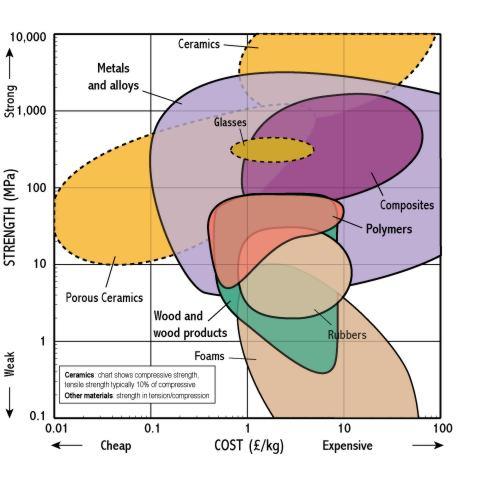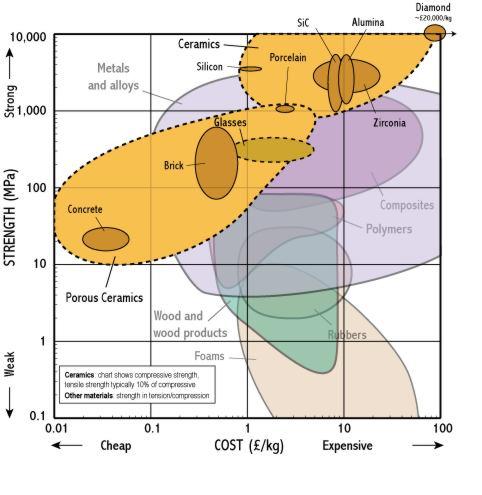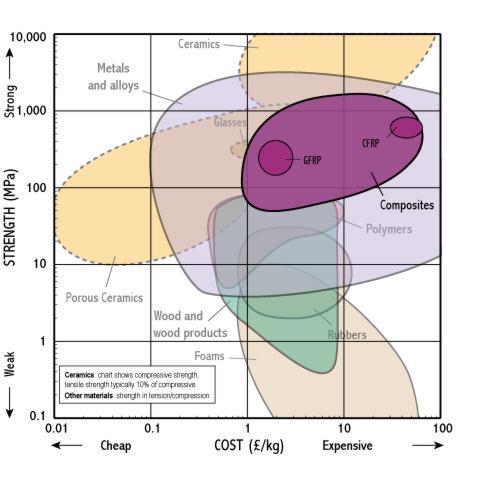Strength - Cost
Class level

Metals and alloys

Ceramics

Polymers

Wood and wood products

Composites

General Information
- Strength measures the resistance of a material to failure, given by the applied stress (or load per unit area)
- The chart shows yield strength in tension for all materials, except for ceramics for which compressive strength is shown (their tensile strength being much lower)
- Many applications require strong materials, e.g. screw drivers, safety belts - these lie at the top of the chart
- Unfortunately there are few cheap high strength materials (top left)
Physical Insights
- Ceramics and glasses have directional covalent bonds. They are weak in tension because they are sensitive to small cracks or flaws.
- Metals do not have directional bonds and have similar tensile and compressive properties
- Cellulose microfibres make wood strong in tension along the grain
- Alloys are much stronger than pure metals
- Metals can be strengthened by heat treating to change the microstructure
Example Uses
- Teflon as a non stick surface for frying pans
- Ceramic for fire bricks and for coatings for jet engine blades
- Tungsten for light bulb filaments
Simple Questions
- Why is wood used for beams rather than stone, when stone has a higher strength?
- Why is pottery weak?
- Why is steel the most commonly used ‘strong’ material?
- Select materials for a screwdriver.
- Select materials for a glass-cutting tool.
Further Questions
- Why can polymers operate only at low temperatures when their polymer chains contain covalent bonds like ceramics?
- What is the operating temperature of a light bulb filament?
There are 2 separate populations for this class to improve clarity. Move the mouse over different parts of the class name to reveal each one.
Select chart:





